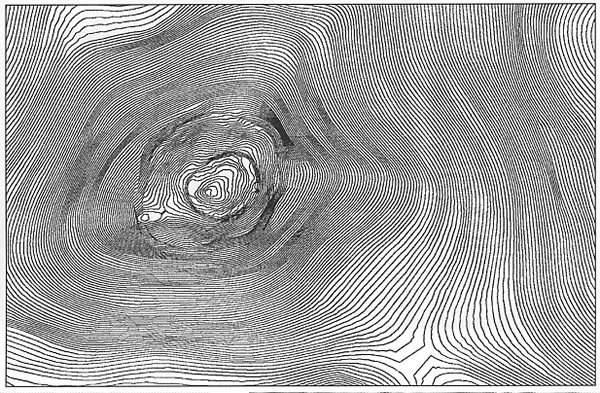| ||||||||||||||||||||||||||||||||||||||||||||||


The Boudy Early Iron Age hill fort
Hill forts are the most distinctive archaeological monuments of the northern Prachensko region. The specialized public has already known prehistoric hill forts for over 150 years. In spite of that excavations have only sporadically taken place on them and none of the hill forts has so far been investigated over a larger area. Our forebears often referred to them as fortifications or castles, which is reflected in local names of hills, which often mean "castle". Current interpretations have settled around some mutually competing, but also complementary theories: the seat of "tribal" rulers, the seat of elites, a refuge, a holy place, places symbolizing the territory of the community or a combination of some of these functions.
Hill forts and highland settlements from the Hallstatt and La Tene periods (7.- 1. century B.C.) are situated on rocky spurs, hills or on extended ridges. These situations had often been used for settlement or fortification in the preceding Bronze Age. 30 hill forts are known today from the whole area of South Bohemia, of which 9 hill forts are located within the area of the Northern Prachensko research project. They are all small in area, most often around 1 ha and they tend not to be internally divided. The fortifications are not homogenous. They are usually made up of ramparts, whose core is made of stone, but whereas sometimes only stones are used, in other places the rampart could be of wooden construction or made from stones mixed with clay. Hill forts newly founded in the Hallstatt period (ca 600-480 BC), which is the case with the hill forts in northern Prachensko, tend to be poor in finds. This has been confirmed in the meantime by the archaeological excavation in Boudy.
Boudy is the best-preserved two-area hill fort dominating the landscape from a hill, which is 574 meters above sea level near the Lomnice and Skalice rivers. The summit has an almost round appearance. The internal rampart, which was carefully constructed from dried boulders, has a circumference of 244m. It has remained distinctly massive to this day. The outer rampart isn't nearly as massive or so well preserved. Its circumference is 420m and in some places a ditch appears on its inner side. The original entrance to the hill fort isn't known. On the western side the outer rampart has been evidently disturbed by a street-like structure. The entrance to the inner area was most likely from the north or northeast. One enters the area today from a way that was most likely knocked through the feature in the middle ages. A substantial part of the hill fort, mainly the outer rampart was destroyed through the removal of stone to build the surrounding villages.

|
|
|
|
